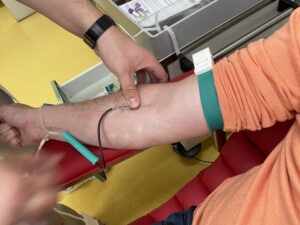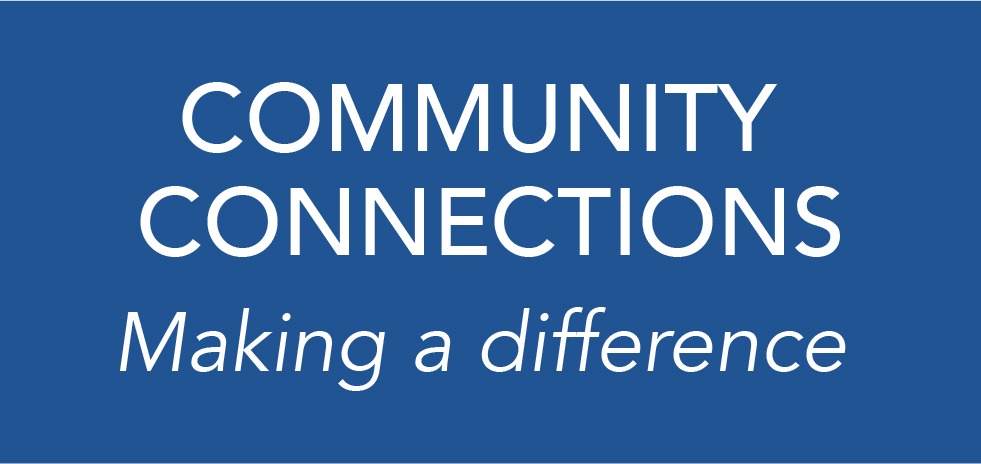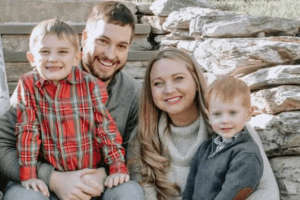Suffering panic attacks can be a frightening and often debilitating experience. They can come on regularly when triggered by something in particular, or out of the blue. The common disorder affects about six million Americans annually. Symptoms vary but can include a racing heartbeat, dizziness, nervousness, shortness of breath, sweating, and a feeling of being out of control. There are some techniques to prevent an attack from occurring.

1. “Don’t Believe Everything You Think”
Panic attacks can come with unrealistic, incoherent, or disturbing thoughts. It may feel like these thoughts are out of control and will end with catastrophic results. The best way to de-escalate is to realize these thoughts are not real, they are a figment of the imagination, and are a result of the brain’s connection to the panic disorder. It is merely a symptom, similar to an itch from a bug bite.
2. Ground Yourself
Sometimes a symptom will manifest itself as an unrealistic feeling of disorientation or a feeling of being out-of-this-world. If that happens, grounding oneself back to reality is an effective solution. If a person feels like he or she is flying or if objects around them are moving when they should be static, it can help to touch something nearby. Some suggestions include taking keys out of a pocket or sitting on a park bench.
3. “Be Reflective, Not Reactive”
John Tsilimparis, director of the Anxiety and Panic Disorder Center of Los Angeles, recommends this technique. When irrational thoughts become overwhelming, they can easily take over and escalate. To help control these thoughts, which can be scary ones, he suggests writing them down on paper. Doing so will give the mind time to think about them and by visualizing irrational thoughts, one can learn to understand them, rather than feel them.
4. Positive Self-Talk
Positive reinforcement is always more effective than having negative thoughts creep in. Negative thoughts can not only lead to feelings of anxiety, but they can have detrimental effects on symptoms of panic attacks. Positive self-talk, for example, reminding oneself about successes and achievements, boosts confidence and reduces any shame felt about having the disorder. Saying, “I am awesome!” first thing in the morning is a good way to start the day.
5. Ice Cubes
A solution to diverting the mind from weary ideas is as close as the freezer. Holding something uncomfortable, like the chill of ice, forces the mind to focus on something else. People experiencing a panic attack can take an ice cube and squeeze it for as long as possible in one hand. By the time the procedure is completed with the other hand, the brain has had enough time to think more about the discomfort and less about the fear or anxiety.
6. Understand The Physical Responses
Learning about what happens to the body physically as it experiences a panic attack can help a person come up with a defense plan. Recognize things like the eyes dilating, heart beating faster, muscles tensing, and breathing becoming rapid. These things might cause a feeling of faintness or dizziness. Deep breathing or counting can help relax the body and prevent further panic. Knowledge is a vital part of overcoming challenges and conquering difficult tasks.
7. Engage The Mind
Ensuring the brain is kept busy and active is an effective strategy for mitigating panic attacks or preventing them from getting worse. Too much time to think, or overthinking, is often detrimental. There are many things to do to stay mentally active, including reading, doing a crossword puzzle, or knitting. Even more powerful is getting outside to exercise because it raises endorphin levels and allows both the mind and body to focus on something else.
8. Deep Breathing
Panic attacks are often accompanied by short, shallow breaths, which do not provide enough oxygen to the brain. It can also lead to hyperventilation. Specific techniques for deep breathing from the abdomen, which calms the mind, including breathing in deep enough for the diaphragm to help air enter the lungs. A hand placed on the abdomen will rise above the other one placed on the chest when done properly. Hold for seven counts and slowly exhale for eight counts.
9. Cognitive-Behavioral Therapy
Cognitive-Behavioral Therapy is a technique used to train the brain to reverse inaccurate thoughts and beliefs about oneself. Panic attacks can stem from such thoughts but by working with a trained therapist, a disorder can be remedied by changing thoughts and perceptions. Situations commonly reworked include removing the personal ties to events, broadening one’s views of events, and learning to carry on from negative encounters. It is important to highlight positive reinforcements rather than harboring the negative.
10. Lifestyle Changes
Lifestyle affects every aspect of our being. That includes the way a person feels internally. Making lifestyle changes can make a positive difference in the lives of those with panic disorders. Such changes include getting enough sleep, reducing stress, increasing physical activity, taking in less caffeine from food and beverages, and quitting or not starting a drug or alcohol habit. Keeping a tight-knit social circle is also important to a healthy lifestyle and seeking help is a strength, not a weakness.





































